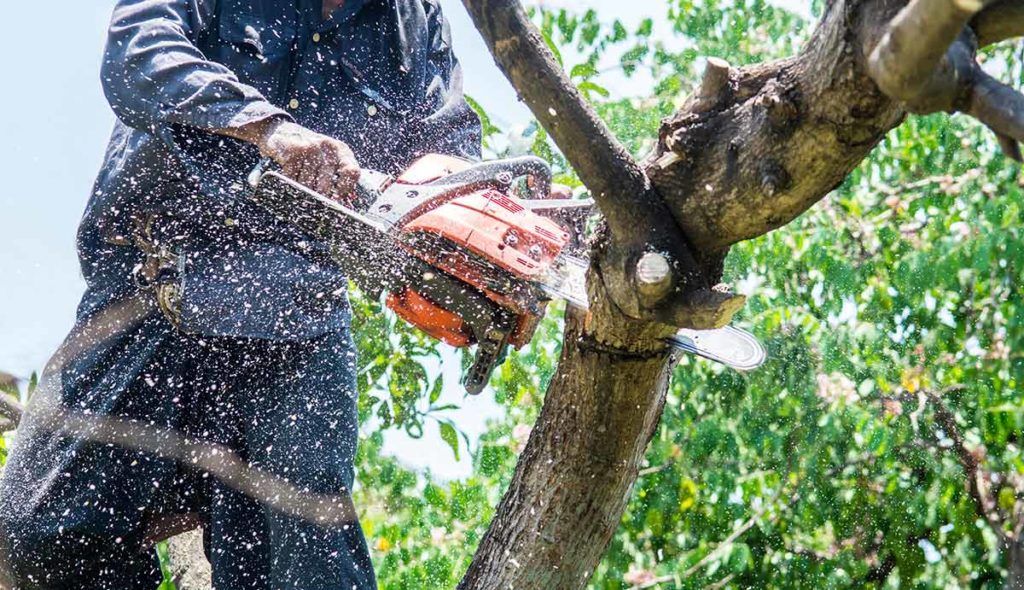5 things to do to create a defensible space around your home before fire season
With this prolonged drought, the Sonoma County fire season now spans more than half of each year. There’s always something that can be done, no matter the time of year, to keep the area around your home less vulnerable to wildfires. Careful and regular vegetation management will reduce the available fire fuels on your property and create a defensible space.
What is defensible space?
Defensible Space, as defined by CalFire, is “the buffer you create between a building on your property and the grass, trees, shrubs, or any wildland area that surrounds it.” Creating this buffer can slow or stop the spread of wildfire and make your house less vulnerable to the oncoming flames, radiant heat, and embers of a wildfire. It also gives the firefighters a safer area to defend your home.
Defensible Space Zones
CalFire has defined three Defensible Zones, with Zone 2 being the furthest from your home and Zone 0 being within five feet. Each zone has different legal regulations. Though Zones 0 and 1 will be the primary focus of this vegetation management guide, it’s good to have an overview of the requirements for all of the zones.
Zone 0
This zone is known as the Ember-Resistant Zone and includes the area within five feet of your home or other structure. Zone 0 laws taking effect January 1, 2023, will require that no flammable items or woody landscaping be within this area surrounding your home or any other structure.
Zone 1
The “Lean, Clean, and Green” Zone is the area within 30 feet of your home or building. The efforts in Zone 1 center around the spacing and pruning of trees and shrubs, and the removal of dead vegetation.
Zone 2
Zone 2 is the Reduce the Fuel Zone and encompasses the area between 30 feet and 100 feet from your home or structure on your property. In this zone, grass and weeds cannot be taller than four inches, fallen vegetation from trees and shrubs can’t be more than three inches deep, and exposed wood piles (only allowed in this zone) must be surrounded by 10 feet of bare mineral soil.
There are also regulations regarding tree spacing in Zone 2. Read Defensible Space and Wildfire Prevention to learn more.
How to create a defensible space around your home with vegetation management
Preparing your yard for fire defense includes a lot of things that you would normally do when maintaining your property. However, doing them correctly and as often as necessary takes on a higher priority when you live in an area prone to wildfires, or any area experiencing a drought.
Following these five recommendations will have you well on your way to creating effective wildfire defensible zones.
1) Remove Dead or Dangerous Trees
There are a number of reasons why dead or dangerous trees should be removed from your property. Fire danger is just one. Drought-stressed trees are more prone to disease, pests, and fire, any of which can cause the tree to fall before you have noticed there’s a danger.
It’s not always apparent, to the layperson, that a tree is dying. One or more of the trees on your property could be at risk. Hiring an arborist with a Tree Risk Assessment Qualification can identify any trees that are in trouble and remove them if it’s too late to save them.
2) Trim and Prune Trees and Shrubs
Regular tree trimming and pruning are essential to maintaining a wildfire defensible space. Tree branches should not overhang your roof and should be at least 10 feet from other trees and any chimneys or stovepipe outlets.
Woody shrubs can also be a fire hazard when not regularly pruned. Spacing them out and keeping them away from decks and other flammable items is also recommended. Read Tree Pruning for Fire Prevention & Defensible Space to learn more.
3) Remove Dead Vegetation
Think of any dead vegetation on your property as kindling for a wildfire. Never let it accumulate anywhere on your property and regularly clear it from your yard. This includes dead leaves, twigs and branches, dry weeds and grass, as well as dead plants.
4) Clear Roof and Gutters
Your roof may be the target of embers in a wildfire. Make sure that they don’t find any fuel by keeping your roof and gutters clear of debris.
5) Choose Fire-Resistant Landscape Plants
Especially within five feet of your home, it is best to plant fire-resistant trees and plants. It’s important to remember that fire-resistant doesn’t mean fireproof, and all vegetation is susceptible to wildfires. Some plants are naturally more combustible and will burn faster, and with high intensity, effectively feeding a wildfire and escalating the spread.
Avoid plants that have woody, non-green interiors; plants with more waxes, resins, or oils; plants with thicker growth patterns; and plants that drop a lot of leaves or bark (kindling). Another thing to consider when placing plants near your home is how tall and how fast they grow, which may become a problem with regard to spacing.
Create a Vegetation Management Plan
With so many things to do to create a defensible space, it’s a good idea to have a plan and set reminders for yourself throughout the year. If your vegetation management to-do list is looking a little daunting, we invite you to make us your vegetation management partner.
Contact the certified arborists at Vintage Tree Care for any of your tree care needs.
The comments are closed.




No comments yet